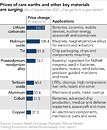Rising Demand and Rush Order Pricing Drive 14.1% QoQ Enterprise SSD Revenue Growth in 1Q22, Says TrendForce
According to TrendForce research, North American data centers saw an improvement in components supply after February, driving a recovery in purchase order volume. As Server brands returned to normal in-office work following the pandemic, the increase in capital expenditures on related information equipment has also boosted order growth. The addition of Kioxia's raw material contamination incident led to an increase in the pricing of certain rush orders, pushing up overall Enterprise SSD revenue in 1Q22 to US$5.58 billion, or 14.1% growth QoQ.
According to TrendForce, Samsung and SK hynix (including Solidigm) were the top two players in 1Q22. At the beginning of the year, demand from hyperscale data centers resulted in high inventory levels due to component mismatches, leading Samsung's order growth missing expectations. However, as repercussions from the WDC and Kioxia contamination incident hit NAND Flash production capacity in 1Q22, server customers quickly turned to Samsung for additional orders, driving the company's 1Q22 revenue to US$2.77 billion, up 14.8% QoQ.
According to TrendForce, Samsung and SK hynix (including Solidigm) were the top two players in 1Q22. At the beginning of the year, demand from hyperscale data centers resulted in high inventory levels due to component mismatches, leading Samsung's order growth missing expectations. However, as repercussions from the WDC and Kioxia contamination incident hit NAND Flash production capacity in 1Q22, server customers quickly turned to Samsung for additional orders, driving the company's 1Q22 revenue to US$2.77 billion, up 14.8% QoQ.

































